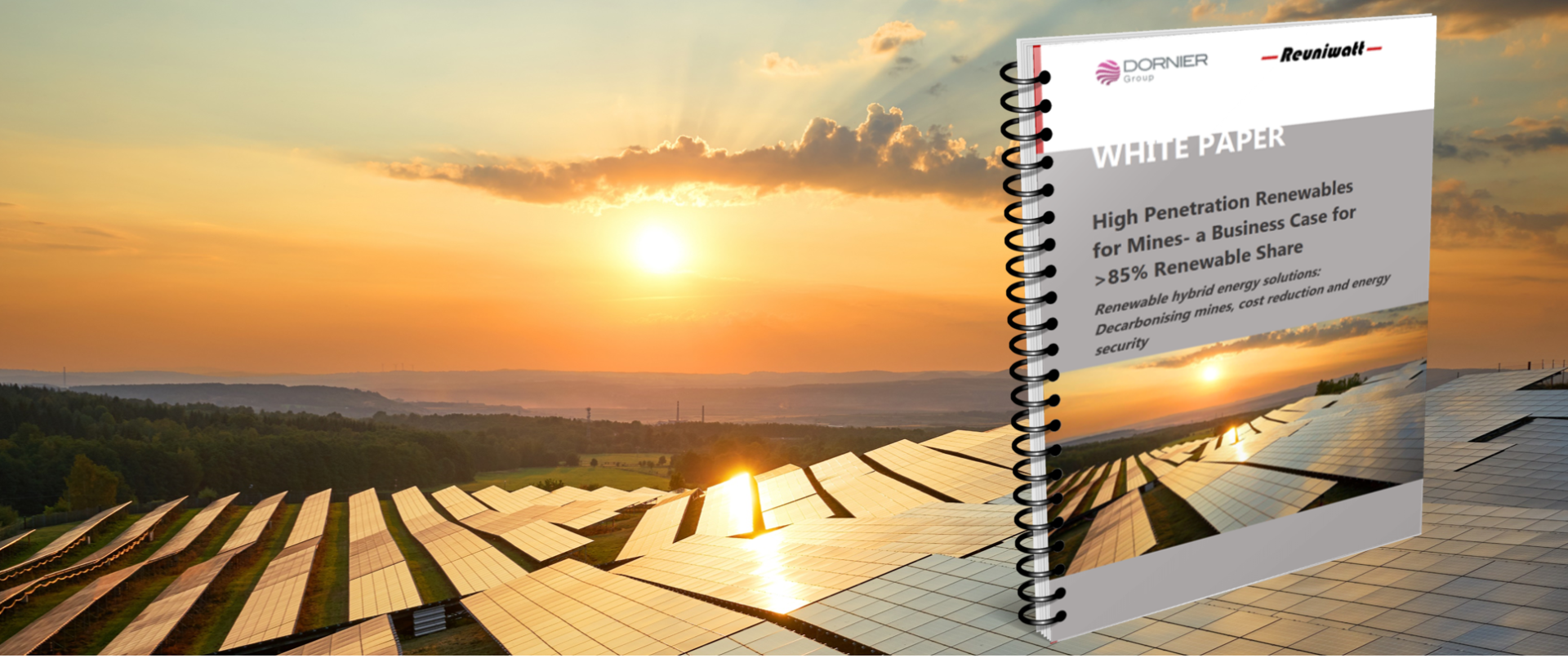Many mines operate 24/7 with limited fluctuations in their load profiles. The economic viability of a hybrid power plant combining solar power, wind power, BESS and thermal units can be anticipated using Dornier Suntrace’s in-house modelling tool AHEAD. Forecasts of energy yields of renewable generation, as provided by Reuniwatt, are an essential tool to optimise the injection of solar and wind energy into the mine’s mini-grid once its hybrid power plant is operational.
Implementing hybrid projects at mines
The ratio of renewable output to total output of hybrid power generation, known as renewable penetration, reaches 20-25% fuel savings range for many off-grid mines. On a conceptual level, much higher renewable energy penetration levels can be achieved, as presented in this white paper. While thermal units and battery storage remain highly complimentary in a hybrid setup, the addition of renewable assets offers a number of advantages for mining companies:
- decarbonization: adding the largest renewables share while still making an economically viable decision
- economic benefits: payback periods for renewable projects in off-grid locations often range from 4-6 years
- flexibility and reliability: using wind and solar forecasts significantly increases confidence that a hybrid power generation will accommodate the load’s characteristics while maximizing fuel savings
If a mining company wants to integrate renewables into their off-grid or grid-connected project, a high-level analysis is the first step to address all relevant aspects, such as the demand profile, solar & wind resources, technology selection, optimization of the best sizing and economic analyses. This allows for an overview of the options available, and helps to identify the best way to implement the project according to the metrics most relevant to the project owner. Different results of this process are highlighted in the case study presented in this white paper, diving into 4 different scenarios, and showing that wind and PV generation combined with a 4 h Battery energy storage can achieve >85% of renewable electricity share as annual average with an amortization period of below 6 years.
Intermittency of wind and solar
Proper integration of the selected power sources requires an advanced Energy Management System (EMS) balancing load and demand at the mine 24/7. Given the intermittency of wind and solar power, sudden changes in power output due to the variability of wind speeds and due to the movement of clouds causing short-term changes in irradiance intensity, wind and solar forecasts are a necessary tool to increase the reliability as well as fuel savings within the hybrid system. Simulations performed for a hybrid PV + diesel system suggest that unnecessary start/stop actions of thermal unites can also be prevented by utilizing short-term wind and solar forecasts, thereby providing better grid stability and reducing genset maintenance over time. Another advantage may be the lifetime extension of BESS through optimized charging cycles of the batteries in relation to PV ramp-rate smoothing, performed using short-term solar forecasts derived from an all-sky imager.
To learn more about this topic, download our latest white paper « High Penetration Renewables for Mines- a Business Case for >85% Renewable Share. Renewable hybrid energy solutions: Decarbonising mines, cost reduction and energy security« .
This white paper was co-authored by Dornier Suntrace, an independent consultant for renewables-based power plants, combining leading technological knowledge with profound financing experience.
